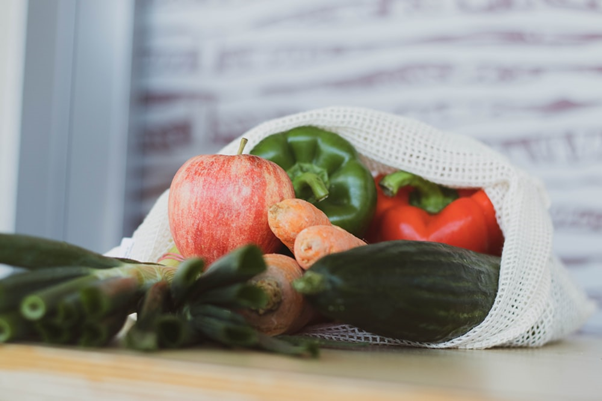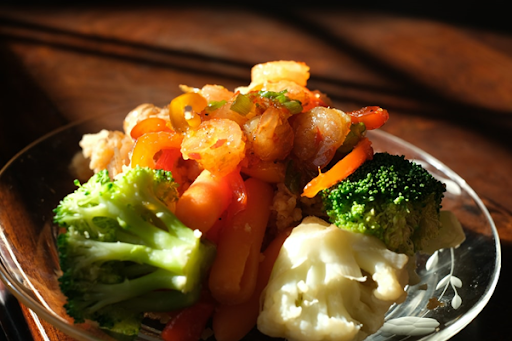
You have heard of sustainable living, plastic-free culture, and green practices. But how often do you take pride in buying local produce from the farmers’ market? Your kitchen can be a great place to adopt green habits. The food you buy in the cooking and storage ways can help reduce carbon footprint and benefit the environment immensely while keeping you and your family healthy.
A few tricks can help you eat your favorite meals without disturbing nature and the ecosystem. From picking organic foods and ingredients like hemp seed oils to growing your organic fodder in your backyard, your tryst with nature can be a lot more interesting. Here is how to make green eating a lifestyle habit.
Eat Organic Produce

Purchase locally grown produce. Vegetables and fruits are environmentally friendly and involve less transportation cost and fuel consumption. Certified organic foods and herbal solutions like green Malay kratom reach your table with no contact with harmful pesticides and fertilizers.
Though organic foods can be pricier, they contain valuable nutrients like antioxidants missing in fancy-looking restaurant food. When you buy your green stock from farmers’ markets, you also help boost the farmers’ livelihood. Pick restaurants that support local producers and subscribe to a community support program to get your local food delivered to you weekly.
Include More Plants In Your Diet

A plant-based or vegan diet will give you adequate health and nutrition with no oils and processed packaged foods. Tofu, beans, nuts have proteins and several other nutrients and are cheaper than animal-based proteins. A flexitarian diet increases your vegetable consumption, keeps your animal diet, and adds sugar consumption to a bare minimum. It also promotes heart health, is suitable for your waistline, helps prevent and manage diabetes, and may prevent cancer.
Embrace Minimal Packaging And Less Waste
You may love to order meals in well-packaged plastic containers but think of the single-use plastic bowls and boxes clogging oceans and lakes. Animal bones scattered in your nearby dumping ground attract fleas, plague, and food-borne diseases. Recycling is expensive and involves many hands and minds.
Explore new-age food packaging made from bamboo, seaweed, and polymers. Edible outer wrappings are finding their foot in the plastic-alternatives industry and will gain mass acceptance in times to come. In the interim, purchase unwrapped produce and bring it home in washable silicone bags. Drink your beverage in a reusable cup. Meat lovers should buy deli meat from the local butcher and carry it home in a stainless-steel container to avoid harmful plastic packaging.
Sample Mediterranean Food

The Mediterranean diet is a top-ranked healthy and eco-friendly meal plan offering various nuts, vegetables, legumes, olive oil, and seafood. Stick to small dairy products like yogurt and say yes to hummus with carrots or other vegetables.
Substitute your red meat consumption with fish. Research your seafood source before buying it. Use the Seafood Watch app to find eco-friendly fish within your living zone. You can eat a few eggs and drink red wine in moderation. A Mediterranean diet is a sustainable diet that has good fan-following worldwide.
Pick an Organic Animal Diet
If it is hard to give up on meat and chicken, choose organic-fed animal products. Organic animal feed has no hormones, antibiotics, and harmful chemicals and no animal by-products either. They are USDA-approved and adhere to quality standards and protocols.
Consuming organic feed is beneficial for the environment. It keeps your body and your flesh-eating free of chemicals and pollutants.
Pack Eco-Friendly Tiffin
Kids look for interesting and creative ways to keep themselves occupied. An eco-friendly lunch could be your best bet. Make a sumptuous lunch box with red and orange capsicum, colorful fruits, strawberries, pita bread, broccoli thrown in. Include a stainless-steel water bottle, a cloth napkin, and reusable containers to pack fresh food. Make use of chicken bones and vegetable trimmings to cook a healthy bone broth. Toss an overripe fruit in a blender to make your child enjoy a delicious smoothie.
Reimagine Leftovers
Discard your thought of throwing away food leftovers when you can consume it the next day and enjoy taste and nutrition. Make a curry of solid food leftovers, or dress up your sprouts with a few strawberries and nuts.
Stir fry peanut tofu or make a lentil quinoa stew to make your reimagined leftover anything but ordinary. Explore flavorful fillings by trying different herbs, vegetables, spices to give your cuisine a healthy makeover.
Final Thoughts
Make informed choices on your dietary purchase and consumption. Eat raw foods and vegetables on most days of the week. Also, eat in season, and avoid consuming cold storage foods. Replace harmful plastic containers with healthy substitutes. Finally, grow your home garden to get farm-fresh vegetables and fruits every day. Nature has plenty of options to help us all live well and disease-free. Take these small steps individually to contribute to a healthier world and promote sustainability.
This post was written by Lisa Dinh
Looking for more eco-friendly tips? Read this post on building an eco-friendly aquarium.








